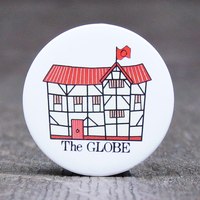When Women Ruled the World by Maureen Quilligan
The sixteenth century in Europe was a time of chronic destabilisation in which institutions of traditional authority were challenged and religious wars seemed unending. Yet it also witnessed the remarkable flowering of a pacifist culture, cultivated by a cohort of extraordinary women rulers―most notably, Mary Tudor; Elizabeth I; Mary, Queen of Scots; and Catherine de’ Medici―whose lives were intertwined not only by blood and marriage, but by a shared recognition that their premier places in the world of just a few dozen European monarchs required them to bond together, as women, against the forces seeking to destroy them, if not the foundations of monarchy itself.
Recasting the complex relationships among these four queens, Maureen Quilligan, a leading scholar of the Renaissance, rewrites centuries of historical analysis that sought to depict their governments as riven by personal jealousies and petty revenges. Instead, When Women Ruled the World shows how these regents carefully engendered a culture of mutual respect, focusing on the gift-giving by which they aimed to ensure ties of friendship and alliance. As Quilligan demonstrates, gifts were no mere signals of affection, but inalienable possessions, often handed down through generations, that served as agents in the creation of a steep social hierarchy that allowed women to assume political authority beyond the confines of their gender.
Every purchase you make supports the work of Shakespeare's Globe. Thank you!
Detail
Author: Maureen Quilligan
Format: Paperback
Pages: 320
Staff Review
While the 16th century was a time of instability and change, especially in matters of religion, it also is unique for its female rulers and their relationships with one another. Four remarkable women ruled western Europe; Mary I and her sister Elizabeth I and Mary, Queen of Scots on the island of Britain and Catherine de Medici who was regent of France for many years. These ‘sister’ queens were joined not only by the ties of blood and marriage, but also in a recognition that they were stronger working together as women in a world of men.
While the history I remember casts these four women as jealous rivals, always out to score points from one another, When Women Ruled the World shows the reader a different view. One where these powerful women supported and respected each other and aimed to maintain friendly alliances. The book focuses on the gifts they gave each other, not mere signs of affection but gifts that telegraphed respect, cooperation, and support.
The surviving gifts are examined in terms of their meanings to gifter and recipient, as well as the gifts deeper meaning and context in terms of history. We see the handmade book the young Elizabeth makes for her stepmother, Katherine Parr, which brought about a reconciliation. The book of poetry given by Catherine to Elizabeth, that contains warning against devious councillors, and the solid gold font gifted by Elizabeth to Mary Stuart on the baptism of Mary’s son James.
The book is a fascinating look at some astonishing works of art (lots of lovely pictures!) and their deeper meanings, as well as an eye-opening re-examination of the relationships between a group of powerful connected women.
Reviewed by Meghan Cole (Head of Retail)
The sixteenth century in Europe was a time of chronic destabilisation in which institutions of traditional authority were challenged and religious wars seemed unending. Yet it also witnessed the remarkable flowering of a pacifist culture, cultivated by a cohort of extraordinary women rulers―most notably, Mary Tudor; Elizabeth I; Mary, Queen of Scots; and Catherine de’ Medici―whose lives were intertwined not only by blood and marriage, but by a shared recognition that their premier places in the world of just a few dozen European monarchs required them to bond together, as women, against the forces seeking to destroy them, if not the foundations of monarchy itself.
Recasting the complex relationships among these four queens, Maureen Quilligan, a leading scholar of the Renaissance, rewrites centuries of historical analysis that sought to depict their governments as riven by personal jealousies and petty revenges. Instead, When Women Ruled the World shows how these regents carefully engendered a culture of mutual respect, focusing on the gift-giving by which they aimed to ensure ties of friendship and alliance. As Quilligan demonstrates, gifts were no mere signals of affection, but inalienable possessions, often handed down through generations, that served as agents in the creation of a steep social hierarchy that allowed women to assume political authority beyond the confines of their gender.
Every purchase you make supports the work of Shakespeare's Globe. Thank you!
Detail
Author: Maureen Quilligan
Format: Paperback
Pages: 320
Staff Review
While the 16th century was a time of instability and change, especially in matters of religion, it also is unique for its female rulers and their relationships with one another. Four remarkable women ruled western Europe; Mary I and her sister Elizabeth I and Mary, Queen of Scots on the island of Britain and Catherine de Medici who was regent of France for many years. These ‘sister’ queens were joined not only by the ties of blood and marriage, but also in a recognition that they were stronger working together as women in a world of men.
While the history I remember casts these four women as jealous rivals, always out to score points from one another, When Women Ruled the World shows the reader a different view. One where these powerful women supported and respected each other and aimed to maintain friendly alliances. The book focuses on the gifts they gave each other, not mere signs of affection but gifts that telegraphed respect, cooperation, and support.
The surviving gifts are examined in terms of their meanings to gifter and recipient, as well as the gifts deeper meaning and context in terms of history. We see the handmade book the young Elizabeth makes for her stepmother, Katherine Parr, which brought about a reconciliation. The book of poetry given by Catherine to Elizabeth, that contains warning against devious councillors, and the solid gold font gifted by Elizabeth to Mary Stuart on the baptism of Mary’s son James.
The book is a fascinating look at some astonishing works of art (lots of lovely pictures!) and their deeper meanings, as well as an eye-opening re-examination of the relationships between a group of powerful connected women.
Reviewed by Meghan Cole (Head of Retail)
UK – 1-5 business days
Europe – 1-2 weeks
Rest of world – 1-3 weeks
Please note: Print to order products are dispatched separately to the rest of your order. This means that if you order these items alongside other shop products, they won’t all arrive together, and you’ll get several deliveries.
UK – 1-5 business days
Europe – 1-2 weeks
Rest of world – 1-3 weeks
Please note: Print to order products are dispatched separately to the rest of your order. This means that if you order these items alongside other shop products, they won’t all arrive together, and you’ll get several deliveries.
When Women Ruled the World by Maureen Quilligan
The sixteenth century in Europe was a time of chronic destabilisation in which institutions of traditional authority were challenged and religious wars seemed unending. Yet it also witnessed the remarkable flowering of a pacifist culture, cultivated by a cohort of extraordinary women rulers―most notably, Mary Tudor; Elizabeth I; Mary, Queen of Scots; and Catherine de’ Medici―whose lives were intertwined not only by blood and marriage, but by a shared recognition that their premier places in the world of just a few dozen European monarchs required them to bond together, as women, against the forces seeking to destroy them, if not the foundations of monarchy itself.
Recasting the complex relationships among these four queens, Maureen Quilligan, a leading scholar of the Renaissance, rewrites centuries of historical analysis that sought to depict their governments as riven by personal jealousies and petty revenges. Instead, When Women Ruled the World shows how these regents carefully engendered a culture of mutual respect, focusing on the gift-giving by which they aimed to ensure ties of friendship and alliance. As Quilligan demonstrates, gifts were no mere signals of affection, but inalienable possessions, often handed down through generations, that served as agents in the creation of a steep social hierarchy that allowed women to assume political authority beyond the confines of their gender.
Every purchase you make supports the work of Shakespeare's Globe. Thank you!
Detail
Author: Maureen Quilligan
Format: Paperback
Pages: 320
Staff Review
While the 16th century was a time of instability and change, especially in matters of religion, it also is unique for its female rulers and their relationships with one another. Four remarkable women ruled western Europe; Mary I and her sister Elizabeth I and Mary, Queen of Scots on the island of Britain and Catherine de Medici who was regent of France for many years. These ‘sister’ queens were joined not only by the ties of blood and marriage, but also in a recognition that they were stronger working together as women in a world of men.
While the history I remember casts these four women as jealous rivals, always out to score points from one another, When Women Ruled the World shows the reader a different view. One where these powerful women supported and respected each other and aimed to maintain friendly alliances. The book focuses on the gifts they gave each other, not mere signs of affection but gifts that telegraphed respect, cooperation, and support.
The surviving gifts are examined in terms of their meanings to gifter and recipient, as well as the gifts deeper meaning and context in terms of history. We see the handmade book the young Elizabeth makes for her stepmother, Katherine Parr, which brought about a reconciliation. The book of poetry given by Catherine to Elizabeth, that contains warning against devious councillors, and the solid gold font gifted by Elizabeth to Mary Stuart on the baptism of Mary’s son James.
The book is a fascinating look at some astonishing works of art (lots of lovely pictures!) and their deeper meanings, as well as an eye-opening re-examination of the relationships between a group of powerful connected women.
Reviewed by Meghan Cole (Head of Retail)
The sixteenth century in Europe was a time of chronic destabilisation in which institutions of traditional authority were challenged and religious wars seemed unending. Yet it also witnessed the remarkable flowering of a pacifist culture, cultivated by a cohort of extraordinary women rulers―most notably, Mary Tudor; Elizabeth I; Mary, Queen of Scots; and Catherine de’ Medici―whose lives were intertwined not only by blood and marriage, but by a shared recognition that their premier places in the world of just a few dozen European monarchs required them to bond together, as women, against the forces seeking to destroy them, if not the foundations of monarchy itself.
Recasting the complex relationships among these four queens, Maureen Quilligan, a leading scholar of the Renaissance, rewrites centuries of historical analysis that sought to depict their governments as riven by personal jealousies and petty revenges. Instead, When Women Ruled the World shows how these regents carefully engendered a culture of mutual respect, focusing on the gift-giving by which they aimed to ensure ties of friendship and alliance. As Quilligan demonstrates, gifts were no mere signals of affection, but inalienable possessions, often handed down through generations, that served as agents in the creation of a steep social hierarchy that allowed women to assume political authority beyond the confines of their gender.
Every purchase you make supports the work of Shakespeare's Globe. Thank you!
Detail
Author: Maureen Quilligan
Format: Paperback
Pages: 320
Staff Review
While the 16th century was a time of instability and change, especially in matters of religion, it also is unique for its female rulers and their relationships with one another. Four remarkable women ruled western Europe; Mary I and her sister Elizabeth I and Mary, Queen of Scots on the island of Britain and Catherine de Medici who was regent of France for many years. These ‘sister’ queens were joined not only by the ties of blood and marriage, but also in a recognition that they were stronger working together as women in a world of men.
While the history I remember casts these four women as jealous rivals, always out to score points from one another, When Women Ruled the World shows the reader a different view. One where these powerful women supported and respected each other and aimed to maintain friendly alliances. The book focuses on the gifts they gave each other, not mere signs of affection but gifts that telegraphed respect, cooperation, and support.
The surviving gifts are examined in terms of their meanings to gifter and recipient, as well as the gifts deeper meaning and context in terms of history. We see the handmade book the young Elizabeth makes for her stepmother, Katherine Parr, which brought about a reconciliation. The book of poetry given by Catherine to Elizabeth, that contains warning against devious councillors, and the solid gold font gifted by Elizabeth to Mary Stuart on the baptism of Mary’s son James.
The book is a fascinating look at some astonishing works of art (lots of lovely pictures!) and their deeper meanings, as well as an eye-opening re-examination of the relationships between a group of powerful connected women.
Reviewed by Meghan Cole (Head of Retail)
UK – 1-5 business days
Europe – 1-2 weeks
Rest of world – 1-3 weeks
Please note: Print to order products are dispatched separately to the rest of your order. This means that if you order these items alongside other shop products, they won’t all arrive together, and you’ll get several deliveries.
UK – 1-5 business days
Europe – 1-2 weeks
Rest of world – 1-3 weeks
Please note: Print to order products are dispatched separately to the rest of your order. This means that if you order these items alongside other shop products, they won’t all arrive together, and you’ll get several deliveries.






































![Out, Out Brief [Playhouse] Candle](http://shop.shakespearesglobe.com/cdn/shop/products/swpcandles.jpg?v=1722516059&width=200)




